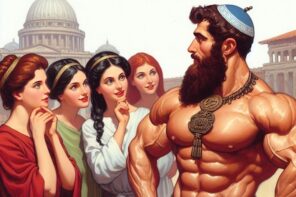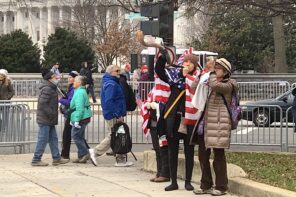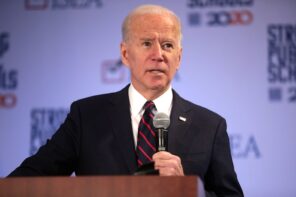BETHLEHEM, WEST BANK, PALESTINIAN TERRITORIES — The sound of men’s and women’s prayers and sobbing filled the two rooms of the simple stone structure of an ancient holy site last Thursday. Here, under a domed ceiling, below a nine-foot high sarcophagus is believed to be the tomb belonging to biblical foremother Rachel, the wife of Jacob and mother of Joseph.
According to the Bible, Rachel weeped convincing G-d to allow the Jews to return from exile in Babylon. Many religious Jews today believe she helped the Jewish People return to the Land of Israel and create a state in 1948.
Israeli Prime Minister Binyamin Netanyahu announced last week that Rachel’s Tomb in Bethlehem and the Cave of the Patriarchs in Hebron—the fourth most important site in Islam—would be included in a list of 150 Israeli National Heritage Sites, a move widely seen as an effort to permanently control the sites for exclusively Jewish use. The Jerusalem Post reported that Netanyahu included the two Palestinian sites under pressure from right-wing parties that oppose Palestinian sovereignty. The sites are expected to be renovated.
As central a figure as Rachel is to Judaism, she also plays an important role in Christianity and Islam. In his book, Rachel Weeping, Dr. Fred Strickert, professor of religion at Warburg College, describes how throughout history, women of all faiths would visit Rachel’s Tomb to pray for children, someone’s health, or an easy birth. He refers to sources that chronicle Christian pilgrimages to the tomb as early as 400 A.D. and ancient Christian calendars commemorating Rachel’s life. Muslim history refers to Rachel in the Qur’an, recounting her death and burial, as in the Bible.
In a wall of the room adjacent to Rachel’s Tomb, a mihrab, or Muslim prayer niche, attests to the room’s former role as the Bilal Mosque—as the adjacent room is known to Muslims. But since 1967, the prayers at this ancient holy site at the entrance of the Palestinian city of Bethlehem come only from the mouths of Jews.
“Muslims have no connection with this place,” declared Bracha Mansour-Khoter, a religious Jewish woman who comes to pray twice a month. “I’ve never seen one here. They’re not allowed. This is a Jewish place.”
Ori Landau, a 21-year-old student from Hadera, said she prefers praying at Rachel’s Tomb over the Wailing Wall. “It’s a place you know you are being heard,” she said, adding, “it’s easier through someone else.”
An ultra-Orthodox man dressed in black selling souvenir prayer booklets at the tomb entrance said he heard that, before his mother was born, “Jews prayed in the room with the tomb and Muslims prayed in the room with the mihrab.”
After limiting access to non-Jews in 1967, by 1998, the Israeli military had enclosed the two-room stone structure in a dark fortress-like building and surrounded it by a 26-foot cement wall with military towers manned by Israeli soldiers with M-16 machine guns. Cut off from Bethlehem, the holy site can now be accessed solely from the Israeli-controlled side of the imposing cement wall after passing through a military checkpoint. Christians and Muslims are not welcome.
As an occupying power, Israel is required by international law to preserve the status quo and to act for the benefit of the local civilian population. But Israel claimed security reasons for its Jewish-only access.
“These are Muslim holy sites,” explained Sheikh Taysir Tamimi, head of the Palestinian Shari’a Islamic courts. Tamimi remembers praying in the Bilal Mosque as a child before the Israeli occupation. Today he is the khateeb at the Ibrahimi Mosque, which was built over the Cave of the Patriarchs, the place where the biblical forefathers, Abraham, Sarah, Isaac, Rebecca, Yaakov, and Leah, were buried. “Netanyahu wants to make them solely Jewish sites and to take control of the land under these Muslim sites.”
The structure over the Cave of the Patriarchs has long been under contention. Under Christian rule it was a church, under Muslim rule it was a mosque. Permission to pray inside depended on which religion and ruler was in power at the time. Crusaders prevented Muslims from praying inside, but when Salahaddin conquered the land, he allowed Christians to enter. When the Muslim Mamluks took over they prohibited non-Muslims from entering. Jews were only allowed to get as close as the seventh step to the mosque entrance. This arrangement continued during the Ottoman era and British Mandate. In 1967, when Israel conquered the West Bank and Gaza Strip, it forced the mosque to open its doors to Jews. In 1994, the Jewish settler Baruch Goldstein entered the mosque during the Muslim holiday of Ramaddan and opened fire with an assault rifle killing 29 Muslims at prayer and injuring 125 others before before being bludgeoned to death by the survivors.
Now tensions are high again after Netanyahu’s announcement, and near-daily clashes broke out between stone-throwing Palestinians and Israeli troops in Hebron and spread to the Old City of Jerusalem. Condemnations from Muslim countries around the world poured in; the UN also expressed its concern.
Israel began explaining its decision in an attempt to calm the winds. Netanyahu declared he had no intention of changing the status quo. Israeli President Shimon Peres said, “Israel will continue to grant freedom of worship to every religion in every holy place.”
But it was to no avail; clashes continued.
According to Dr. Shmuel Bercovitz, an Israeli expert on religious sites in Israel and the Palestinian Territories, the Palestinians are using Netanyah’s declaration for nationalistic purposes.
“Palestinians are using religious fervor to ignite the masses in a national struggle,” said Bercovitz, author of Wars over the Holy Sites. “In Islam, religion and nationalism are intertwined together.”
Bercovitz acknowledged that Netanyahu made tactical mistakes in his declaration.
“He should have also said that these two places are also holy to Islam and that Israel has no intention of hurting them,” he said, adding that Israel should have also made clear that it would not make the Ibrahimi Mosque exclusively Jewish as it did Rachel’s Tomb and that any renovations at that mosque would be in coordination with the Muslim Waqf, the Islamic charitable trust that administers Islamic sites and properties under its ownership.
But the problem, it seems, was not that the sites would be renovated, but that they were included on a “national” heritage list, suggesting that they will become a part of Israel.
“Listen, no one can argue that Cave of Patriarchs is not a central heritage site to the Jewish people,” said Rabbi Arik Ascherman, executive director of Rabbis for Human Rights. “Now it is up to the government to prove that this is not a statement of intent that this will be held forever by Israel.”
But the rabbi of the Jewish settlement of Kochav Hashachar believes that Netanyahu’s declaration was a positive move towards Jewish ownership of the religious sites. He opposes a Palestinian state that would give Palestinians sovereignty over part of the ancient Land of Israel and Jewish holy sites.
“The Bible says this is ours,” said Rabbi Yonatan Ellran. “So the approach of compassion is that whoever is not a Jew and lives in the Land of Israel may do so, but he’s not the landlord.”
Rabbi and Professor, Marc Gopin, Director of the Center on Religion, Diplomacy and Conflict Resolution at George Mason University says that Israel has a “purposeful confusion between state interests and religious interests that continually puts the State of Israel at risk.”
“States can build a rational construct for its citizens and neighbors if they have a clear set of needs,” said Gopin. “But when they collapse into messianic religious needs that have no boundaries and that are based on dreams and not reality it becomes the basis for ultranationalist and fascistic fantasies.”




